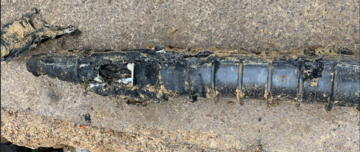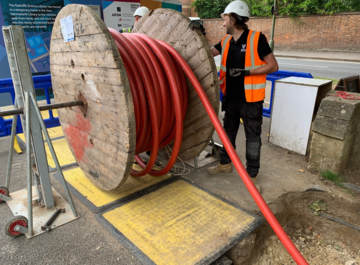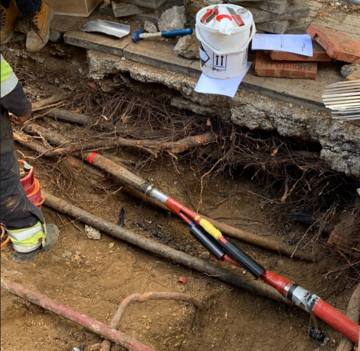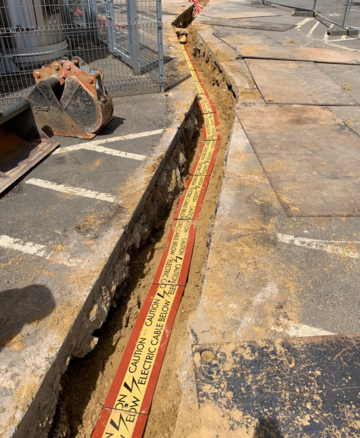We know this has been inconvenient and frustrating for many people based in the area – how hard can it be to replace some cables, and how can it possibly take months and involve closing roads for weeks at a time?
The things being replaced aren’t normal electrical wires. They are heavy-duty armoured cables designed to carry extremely high power loads safely, and many of those under the Science Area have been in place for half a century or more. Getting the new ones into place, joining them and protecting them so that they last for decades more, is not straightforward.
After several spectacular cable failures earlier in 2022 –events we are very lucky happened when nobody was nearby – it became clear that much of the Science Area HV network needed to be replaced. Read on for an update on what the Electrical team and contractors have been doing, why it was needed, and what is still to come.
The Science Area power network
The University owns and manages more than 250 buildings in and around Oxford, and most of them get power from local high- and low-voltage electrical supply networks. These consist of underground cable networks connected to electrical substations which supply one or more buildings. In many cases we own and operate these networks ourselves, including the largest which distributes high-voltage power around the Science Area.
The system is supplied by 33kV primary substation located in the University Parks behind the Physiology building and operated by the power-distribution subsidiary of SSE. Known as the University Parks Substation, this supplies the surrounding area with 28MW of electrical capacity.
The substation steps down the voltage to 11kV for distribution via five ring circuits which serve the Keble Triangle (North Ring), main Science Area (three Central Rings) and the South East corner of South Parks Road (South Ring).
Although the University 11KV network has changed significantly over the last few years with the replacement of various buildings around the Science Area, there is still a lot of cable in the ground that dates back over 60 years.
Cable failure – a growing problem
HV Cable failures are not uncommon across the estate and we would normally expect around one failure every five years – this rate has been very consistent for many years. But this changed between 2015 and 2020, when we had three failures.
On investigating why this was happening, we realised that the waterproofing around these old cables is now failing, letting water seep into the cable, penetrate the many layers of shielding and eventually cause it to fail suddenly.
During 2021 we experienced two cable failures, and so far this year we have had three. All these incidents resulted in significant power outages.
How are we dealing with the problem?
Over the summer of 2021, the Estates Electrical team began a major programme of laying new cables to replace the ones that were failing, starting out between the Clarendon Laboratory and Robert Hooke Substation.
Then 2022 started with three more HV cable failures around South Parks Road within a month. It was clear that a gradual approach to the problem was no longer viable. Rob Gregg, Head of Electrical Services, made a decision to accelerate the programme of cable replacement, and secured agreement from Estates Services senior management.

A cable joint after having failed explosively due to water ingress.
Although this would involve inconvenient road closures and noisy, disruptive groundworks, it was essential both from a safety perspective – anyone near one of these cable joints when it fails is in extreme danger – and to restore the power network to its intended level of resilience and return unplanned power outages to an acceptable level.
During the summer of 2022, contractors installed over 1.5km of high-voltage cable at a cost of some £600,000. They have used vacuum excavators to keep workers as safe as possible by avoiding the risk of accidentally damaging cable insulation, while also protecting tree roots and other buried building services.
What next?
There is still a lot to do before the problem is fixed! We recently reopened the footpath along the north side of South Parks Road and the Hinshelwood Road junction and are now working on the cables beneath Mansfield Road, leading to the Pharmacology building.
The last section of the network that needs replacing will need to be left until construction of the Life and Mind Building is complete, since the excavations and footpath closures that will be needed for this will not be practical with that project still underway.

Laying cable in the newly excavated trench.

Installing cable

Jointing two sections of cable that will carry 11kV

Protecting the new cables from disturbance